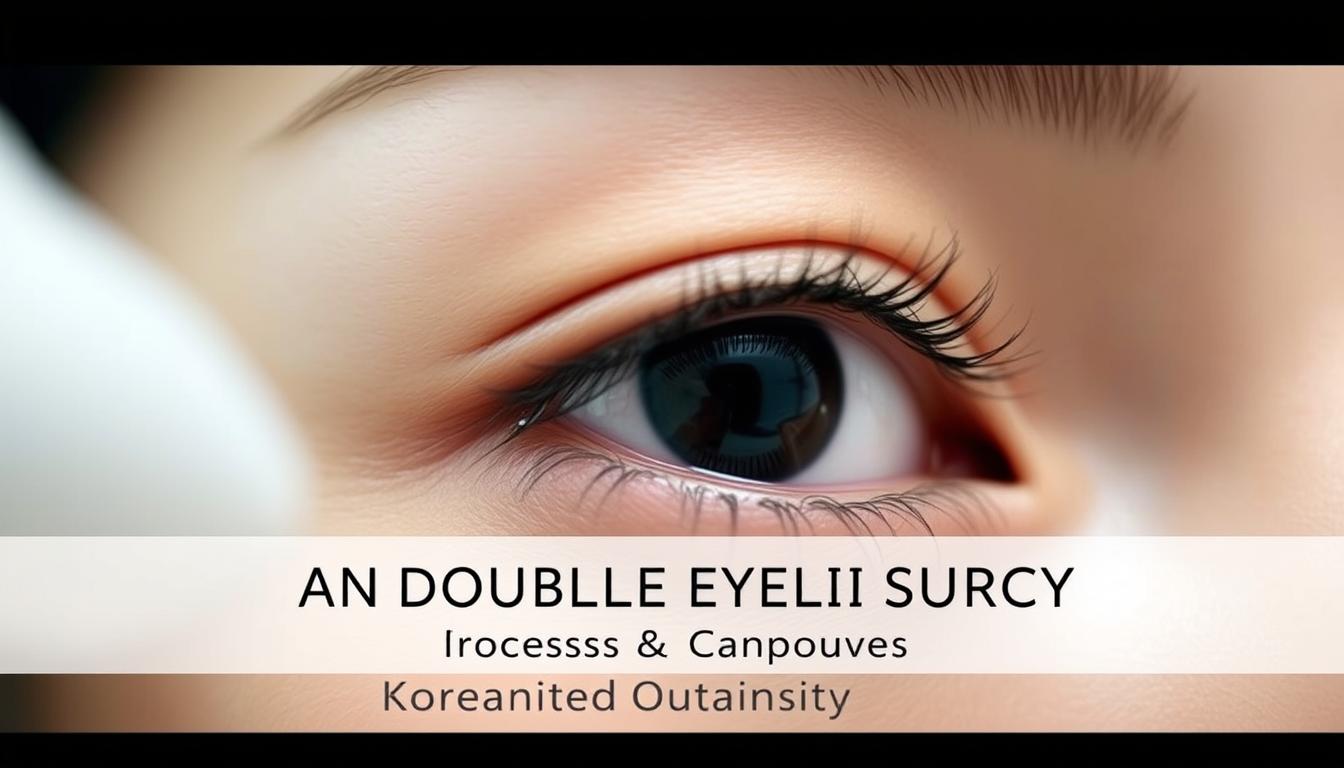Asian blepharoplasty, commonly known as double eyelid surgery, has become a popular cosmetic procedure among individuals seeking to enhance their eye appearance. This specialized procedure creates a defined crease in the upper eyelid, resulting in a more open and alert eye appearance.
The height from the upper lash line to the new eyelid crease is customized based on individual facial features and aesthetic goals. Modern approaches to Asian eyelid surgery focus on creating natural-looking results that complement the patient’s facial structure.
Key Takeaways
- Customized eyelid surgery based on individual facial features and aesthetic goals.
- Modern approaches focus on creating natural-looking results.
- The procedure creates a defined crease in the upper eyelid.
- Results in a more open and alert eye appearance.
- Popular cosmetic procedure among individuals seeking to enhance their eye appearance.
Understanding Korean Double Eyelid Surgery
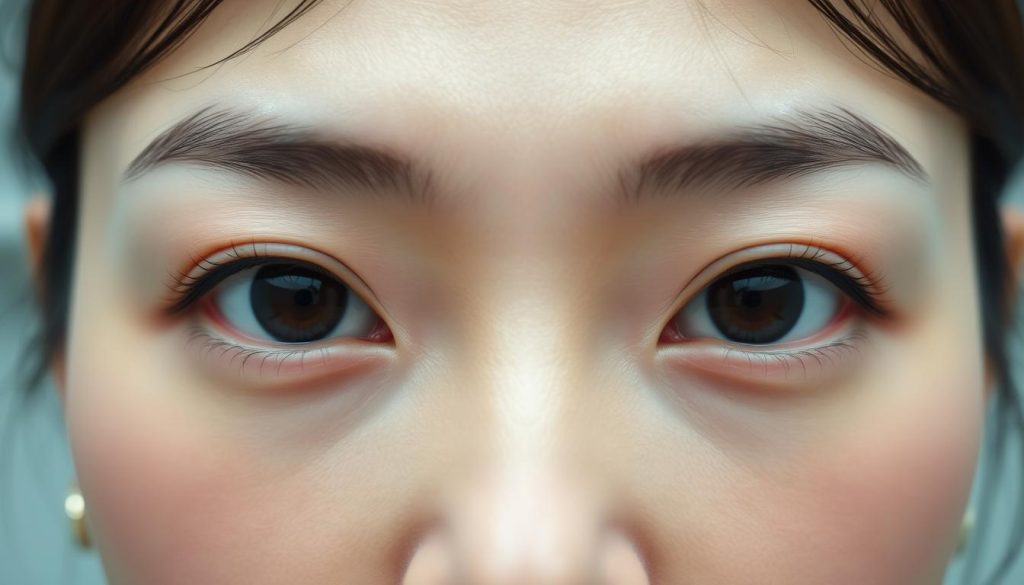
Double eyelid surgery, a procedure that has become synonymous with Korean plastic surgery, aims to create a visible upper eyelid crease. This surgery is particularly popular among individuals who naturally have a monolid eyelid or those seeking to enhance their facial features.
Definition and Purpose
Double eyelid surgery, also known as Asian blepharoplasty, is a specialized plastic surgery procedure that creates a defined crease in the upper eyelid. The purpose of this surgery extends beyond cosmetic enhancement; it also makes applying eye makeup easier and can address functional issues related to monolid eyelids.
Cultural Context and Popularity
In Korean culture, double eyelid surgery has evolved from being taboo to becoming widely accepted. South Korea is now recognized as a global hub for this specialized plastic surgery. The procedure’s popularity has grown significantly over the past two decades, with patients from across Asia and Asian diaspora communities seeking Korean surgical expertise. Unlike older approaches that attempted to westernize Asian features, modern Korean double eyelid techniques focus on enhancing natural Asian beauty while respecting ethnic characteristics.
The Science Behind Double Eyelid Formation
Understanding the science behind double eyelid formation is crucial for appreciating the nuances of this popular cosmetic procedure. The anatomy of the upper eyelid and the presence or absence of an eyelid crease play significant roles in determining the outcome of double eyelid surgery.
Natural vs. Surgically Created Eyelid Creases
A natural double eyelid forms when the levator aponeurosis attaches to the skin, creating a visible crease. In contrast, individuals with monolids lack this attachment, resulting in a smooth eyelid. Surgically created double eyelids mimic the natural attachment by connecting the eyelid skin to the underlying levator mechanism through sutures or incisions.
Anatomy of the Upper Eyelid
The upper eyelid’s anatomy is crucial in determining the presence of a visible crease. Approximately 50% of East Asians are born without a defined fold. The science of crease formation involves precise manipulation of three eyelid layers: skin, orbicularis oculi muscle, and orbital septum, with careful consideration of fat distribution.
| Eyelid Type | Characteristics | Preferred Eyelid Height |
|---|---|---|
| North Eastern Descent | Typically has a smaller eyelid height | 3-6 mm |
| South Eastern Descent | Typically has a taller eyelid height | 7-10 mm |
Types of Korean Double Eyelid Surgery Techniques
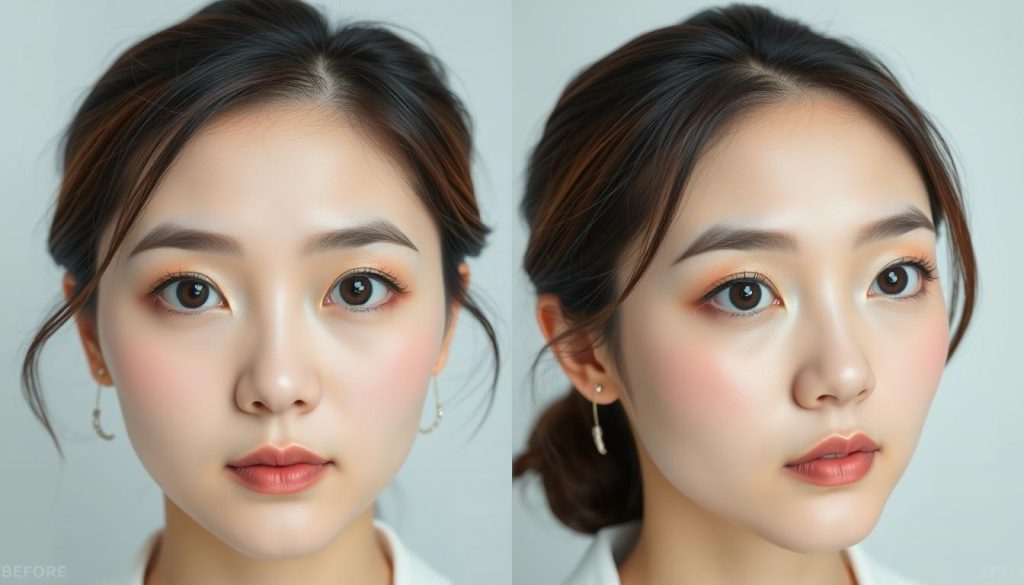
Korean double eyelid surgery has become increasingly popular, with two primary techniques emerging to cater to different patient needs. These techniques are designed to create a natural-looking crease that enhances the eye’s appearance.
Non-Incision Method
The non-incision method, also known as the suture method, involves creating multiple micro-punctures along the desired crease line. Fine threads are then used to connect the skin to deeper tissues, creating a double eyelid. This minimally invasive technique results in faster recovery and less swelling, making it ideal for patients with thin eyelid skin and minimal excess fat.
Incision Method
The incision method involves a complete surgical opening along the planned crease line, allowing for the removal of excess skin, fat, and muscle tissue. This technique creates a more defined and permanent crease. While it requires a longer recovery time and may leave a fine scar, it offers more dramatic and long-lasting results, particularly for patients with thicker skin or excess fat deposits.
Comparing Non-Incision vs. Incision Methods
When considering Korean double eyelid surgery, understanding the differences between non-incision and incision methods is crucial. The decision between these two techniques depends on various factors, including the patient’s anatomy and desired outcomes.
Surgery Duration and Procedure
The non-incision method is typically quicker, lasting about 30 minutes, whereas the incision method takes longer, usually between 60 to 90 minutes, due to its complexity. This difference in surgery time is significant for patients with busy schedules.
Recovery Timeline Differences
Recovery timelines vary significantly between the two methods. Patients who undergo the non-incision method can have their stitches removed after just 2 days and resume normal activities within 1-2 weeks. In contrast, those who opt for the incision method wait 4-5 days for stitch removal and require 2-3 weeks for full recovery.
Pros and Cons of Each Approach
Each method has its advantages and disadvantages. The non-incision technique offers fast recovery and a more natural result but may loosen over time. The incision method, while requiring more recovery time, provides long-lasting results but carries the risk of visible scarring. Understanding these pros and cons is essential for making an informed decision.
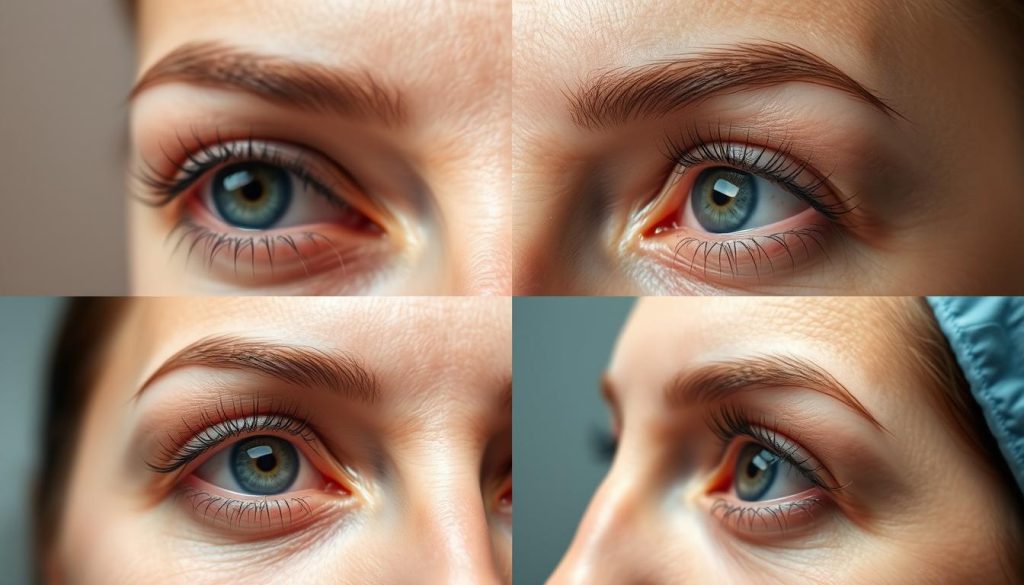
The Korean Double Eyelid Surgery Process
The process of Korean Double Eyelid Surgery is multifaceted, involving careful planning and precise technique. It begins with a comprehensive consultation to determine the ideal crease height and shape based on the patient’s eye anatomy and aesthetic goals.
Initial Consultation and Design
The initial consultation is a critical step where the surgeon evaluates the patient’s eye anatomy and discusses aesthetic goals. Surgeons often use digital imaging or temporary crease creation techniques to help patients visualize potential results. This step is crucial for determining the ideal crease height and shape.
Anesthesia Administration
Most Asian eyelid surgery procedures are performed under local anesthesia with sedation, ensuring patient comfort while maintaining safety. This allows the surgeon to assess eyelid movement during the surgery.
Step-by-Step Surgical Procedure
The surgical procedure involves creating a precise double eyelid line based on the patient’s facial proportions. For the non-incision method, multiple micro-holes are punctured along this line before threading fine sutures to connect the skin to deeper tissues. The incision method involves a complete incision along the planned crease line, careful removal of excess tissue, and precise suturing.
| Procedure Step | Description |
|---|---|
| STEP01 | Create a double eyelid line based on an individual’s preference and aesthetic ratio. |
| STEP02 | Puncture multiple 1~2mm micro holes along the double eyelid line. |
| STEP03 | Use fine thread to fix the inner and outer eyelid. |
| STEP04 | Natural looking double eyelid is created. |
Customizing Your Double Eyelid Surgery
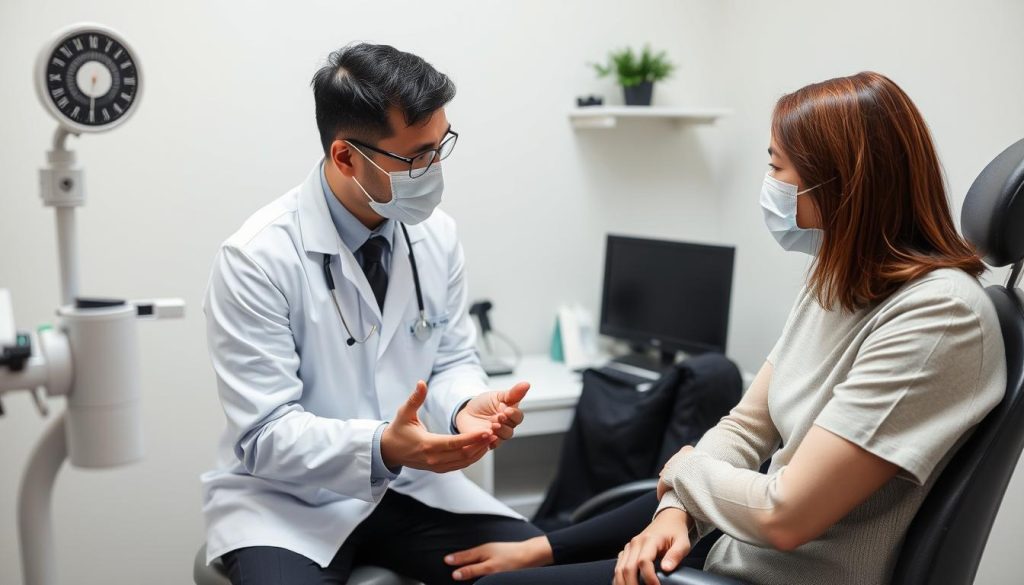
Personalized double eyelid surgery involves tailoring the procedure to individual preferences and anatomy. Customization is key to achieving natural-looking results that complement the patient’s facial features.
Determining the Ideal Crease Height
The height from the upper lash line to the new eyelid crease is customized based on preference and existing anatomy. Typically, individuals of Northeast Asian descent prefer a smaller eyelid height ranging from 3-6 mm.
Considerations for Different Eye Shapes
Eye shape considerations include epicanthal folds, eye width-to-height ratio, and existing asymmetry, all influencing the surgical approach and crease design.
Addressing Asymmetry
Pre-existing asymmetry between the eyes is common and requires meticulous planning to achieve balanced results. Different techniques may be used for each eye.
Recovery and Aftercare
Recovery and aftercare following Korean Double Eyelid Surgery play a significant role in determining the success of the procedure. Proper care during this period can significantly impact the final outcome, making it essential for patients to follow specific guidelines.
Immediate Post-Surgery Care
Immediate post-surgery care focuses on reducing swelling and preventing complications. Patients are advised to apply cold compresses intermittently for the first 48 hours and maintain head elevation even during sleep. It’s crucial to avoid rubbing or touching the surgical area and engaging in activities that increase blood pressure to the face.
Timeline for Healing
The recovery timeline varies depending on the surgical technique used. For non-incision methods, patients typically experience peak swelling at 2-3 days, with significant improvement by day 5-7. In contrast, those who undergo incision methods may have swelling for 1-2 weeks, with residual effects visible for up to 3-4 weeks.
Essential Aftercare Guidelines
To optimize healing, patients should follow specific aftercare guidelines: sleep with the head elevated on 2-3 pillows for two weeks, avoid contact lens wear for three weeks, and refrain from alcohol consumption and smoking for at least four weeks. Additionally, patients should avoid strenuous exercise, swimming, and saunas for at least two weeks post-surgery.
| Aftercare Activity | Recommended Duration |
|---|---|
| Avoid contact lens wear | 3 weeks |
| Refrain from alcohol and smoking | 4 weeks |
| Avoid strenuous exercise and swimming | 2 weeks |
Expected Results and Outcomes
The goal of Korean double eyelid surgery is to create a natural-looking eyelid crease that harmonizes with the patient’s unique facial structure, taking into account factors such as eyebrow height, eyebrow shape, and overall facial contours.
Short-Term Appearance Changes
In the short term (1-3 months), patients can expect their double eyelid appearance to evolve as swelling subsides. The crease initially appears higher and more pronounced before settling into its permanent position.
Long-Term Results
The final results of Asian eyelid surgery typically become visible around 3-6 months post-procedure. Long-term outcomes include a more defined eyelid crease, increased visible eyelid platform, and an overall more open, alert eye appearance.
Factors Affecting Outcome Quality
The quality and longevity of results depend on the surgical technique used and patient-specific factors such as skin thickness and adherence to aftercare instructions.
| Factor | Impact on Outcome |
|---|---|
| Surgical Technique | Incision methods provide more permanent creases |
| Skin Thickness | Thinner skin yields more predictable results |
| Aftercare Adherence | Proper care ensures optimal healing |
Potential Risks and Complications
While Korean double eyelid surgery is generally considered safe, it’s crucial to understand the potential risks involved. As with any surgical procedure, there are risks associated with eyelid surgery.
Common Side Effects
Common side effects of eyelid surgery include temporary swelling, bruising, dryness, and mild discomfort. These effects typically resolve within 1-2 weeks and are considered normal parts of the healing process.
Serious Complications to Be Aware Of
More serious complications, though rare, can include infection, asymmetry, overcorrection, under-correction, visible scarring, and ptosis. Choosing a surgeon with extensive experience in Asian eyelid surgery can minimize these risks.
How to Minimize Risks
To minimize risks, patients should select a board-certified surgeon and follow all pre-operative and post-operative instructions meticulously. Attending follow-up appointments is also crucial.
| Risk Factor | Description | Minimization Strategy |
|---|---|---|
| Infection | Bacterial or viral infection post-surgery | Antibiotics, proper wound care |
| Asymmetry | Uneven eyelid creases | Precise surgical technique, revision surgery if needed |
| Visible Scarring | Noticeable scars from incisions | Skilled surgical technique, post-op scar management |
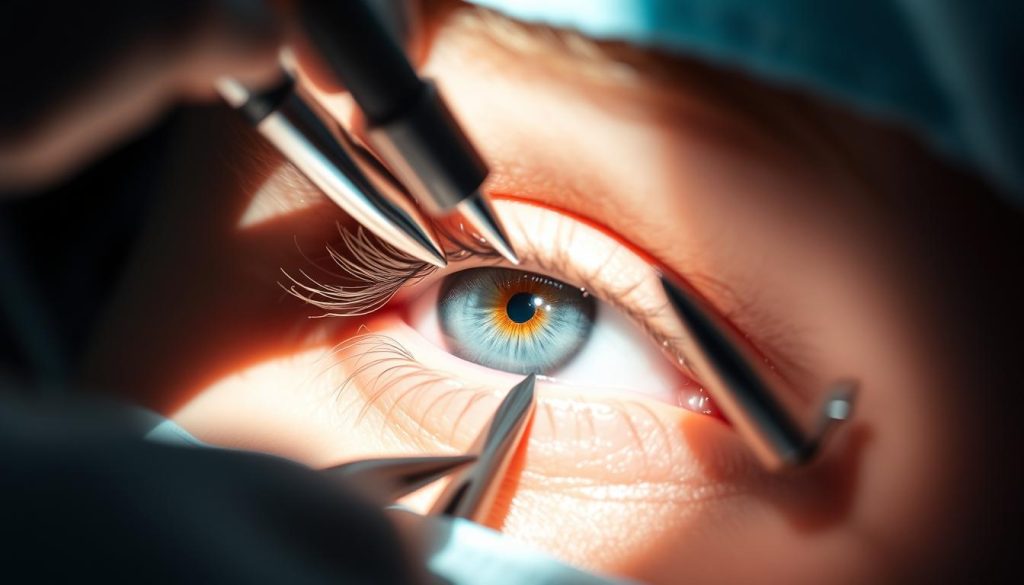
Combining Double Eyelid Surgery with Other Procedures
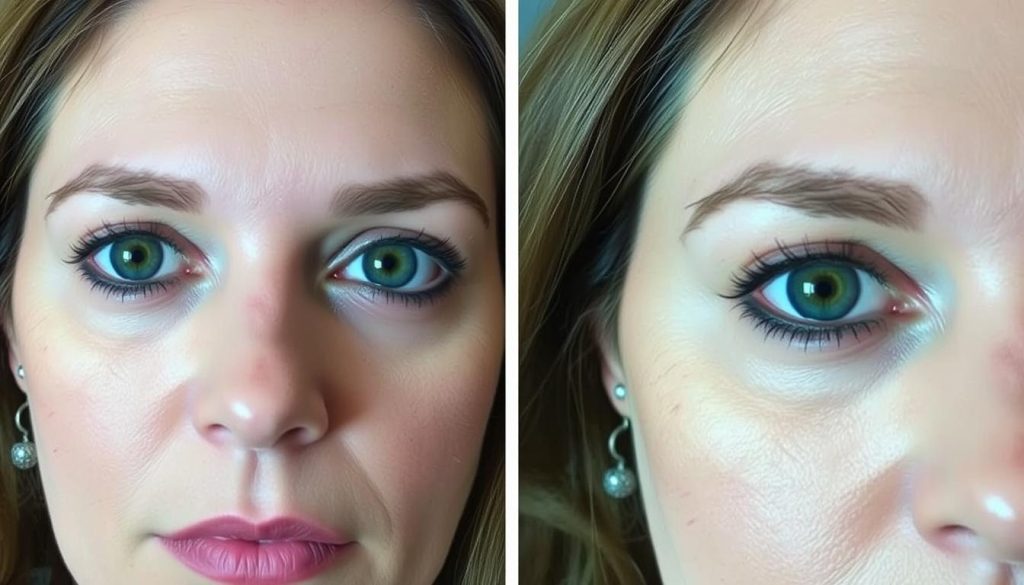
To achieve a more balanced and aesthetically pleasing eye shape, some patients choose to combine double eyelid surgery with additional procedures. Many patients opt for complementary surgeries to enhance their eye appearance comprehensively.
Epicanthoplasty for Inner Corner Enhancement
Epicanthoplasty is a surgical procedure that addresses the epicanthal fold, creating a wider and more open appearance by extending the visible portion of the eye medially. When combined with double eyelid surgery, epicanthoplasty can increase the apparent length of the eye by up to 30%, resulting in a more almond-shaped appearance.
Ptosis Correction for Droopy Eyelids
Ptosis correction is essential for patients with droopy upper eyelids due to weakness in the levator muscle. The incision method of double eyelid surgery is typically preferred when combining with ptosis correction, as it allows direct access to the levator muscle for strengthening and repositioning, thereby enhancing the overall outcome of the eyelid surgery.
Making an Informed Decision About Korean Double Eyelid Surgery
To achieve the desired results from Korean double eyelid surgery, it’s crucial to be well-informed about the surgical techniques and potential outcomes. Consulting with board-certified plastic surgeons who specialize in Asian eyelid surgery is essential, as this procedure requires specific expertise in Asian facial anatomy and aesthetic preferences. Patients should discuss their desired crease height, shape, and overall appearance goals while being open to the surgeon’s recommendations. The cost of the procedure varies widely, between $2,000-$5,000 USD, depending on the surgeon’s experience and technique. Recovery planning is crucial, with patients needing to arrange for at least one week off work. By understanding the process, outcomes, and recovery needs, patients can make an informed decision about undergoing Korean double eyelid surgery.
FAQ
What is the purpose of creating an eyelid crease?
The primary purpose of creating an eyelid crease is to enhance the appearance of the eye by making it look larger and more defined. This is particularly popular among individuals of Asian descent who may naturally have a less prominent or absent eyelid crease.
How long does the recovery process take after eyelid surgery?
The recovery process typically takes around two weeks, during which time patients may experience swelling, bruising, and discomfort. However, most people can return to their normal activities within a week.
What are the risks associated with eyelid surgery?
As with any surgical procedure, there are risks associated with eyelid surgery, including infection, scarring, and asymmetry. However, these risks can be minimized by choosing a qualified and experienced surgeon.
Can eyelid surgery correct ptosis or droopy eyelids?
Yes, eyelid surgery can be used to correct ptosis or droopy eyelids. This is typically achieved through a procedure known as ptosis correction, which involves tightening the muscles that control the eyelid.
How is the ideal crease height determined during surgery?
The ideal crease height is determined during the initial consultation, taking into account the individual’s eye shape, facial structure, and personal preferences. The surgeon will work with the patient to create a customized design that meets their needs.
What is the difference between non-incision and incision methods?
The non-incision method involves using sutures to create a crease without making an incision, whereas the incision method involves making a small incision to create a more permanent crease. The choice between the two methods depends on individual preferences and needs.
Can eyelid surgery be combined with other procedures?
Yes, eyelid surgery can be combined with other procedures, such as epicanthoplasty for inner corner enhancement or ptosis correction. This can help achieve a more comprehensive and harmonious facial appearance.
